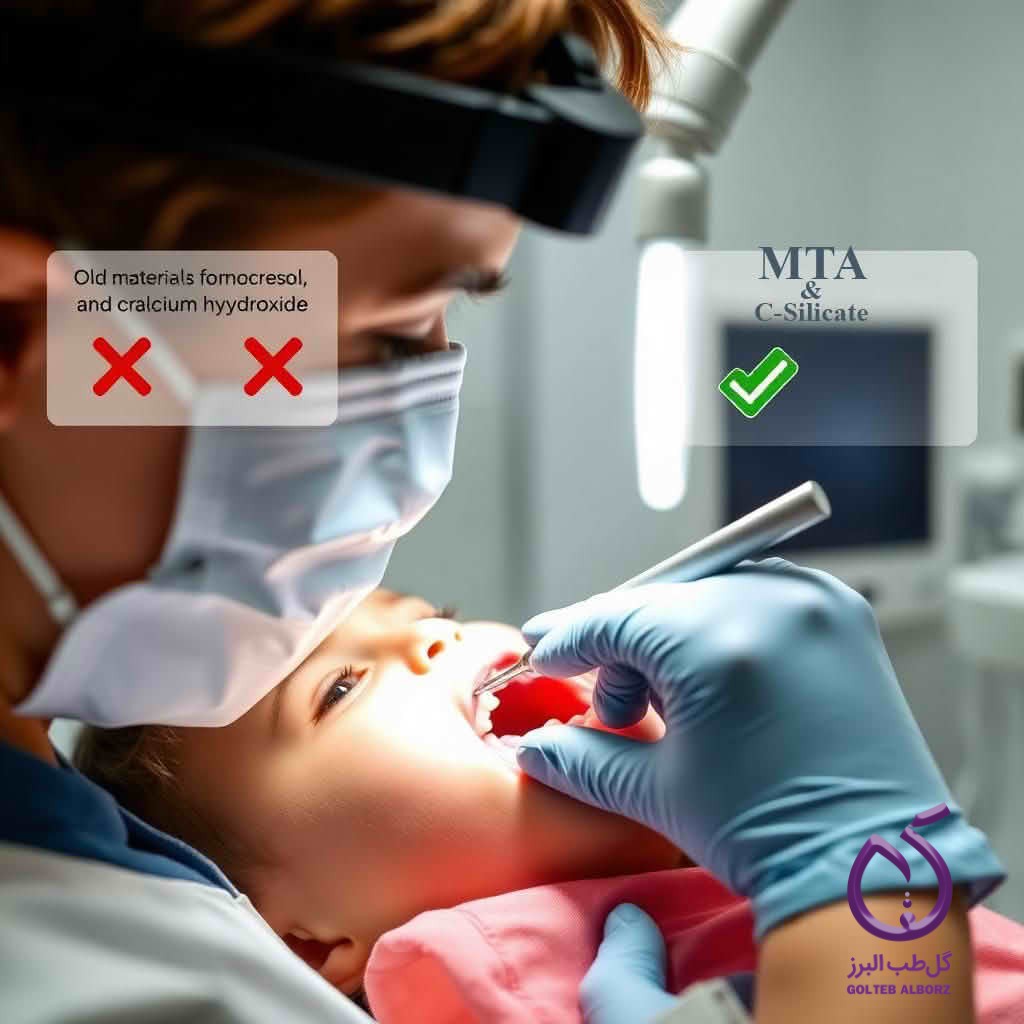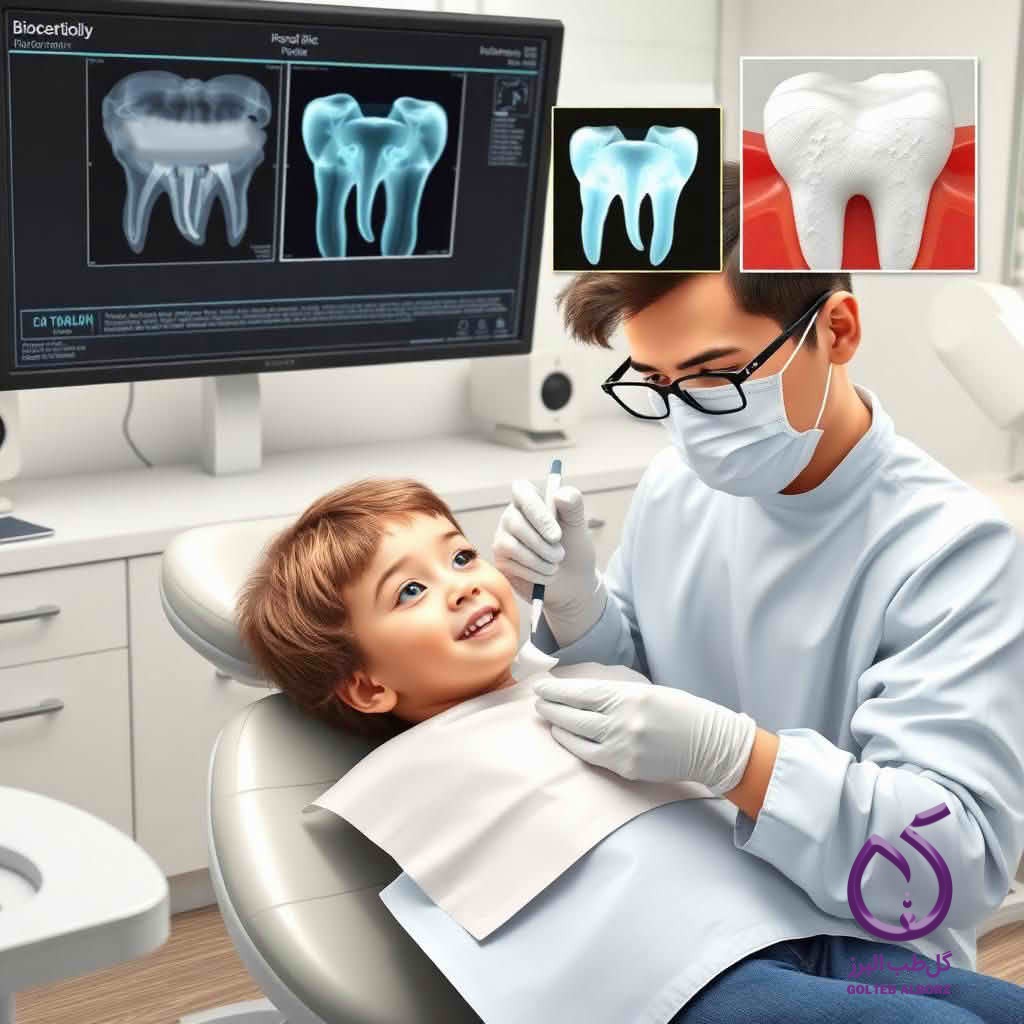Bioceramic Materials in Pediatric Dentistry
2025-07-27 16:48:05

Bioceramic Materials in Pediatric Dentistry
Introduction
The American Dental Association (ADA) defines pediatric dentistry as a specialty that focuses on primary and comprehensive oral health care for infants, children, and adolescents, including those with special healthcare needs. Endodontics, on the other hand, is the study of the morphology, physiology, and pathology of the dental pulp and periapical tissues.
Combining these two fields, endodontic treatments in pediatric dentistry play a critical role in holistic oral care. These treatments encompass the biology of normal pulp, etiology, diagnosis, prevention, and management of pulp and periodontal lesions in young patients.
Evolution in the Treatment of Primary and Immature Permanent Dental Pulp
In the past, semi-toxic materials such as formocresol were used in the treatment of primary tooth pulp. Additionally, iodoform pastes gained popularity in some countries due to their antibacterial properties and resorbability.
The introduction of mineral trioxide aggregate (MTA), and later, tricalcium silicate-based hydraulic cements, significantly improved the success of pulpotomy procedures in primary teeth. Simultaneously, more conservative and biologically oriented approaches began replacing complete caries removal in immature permanent teeth with deep carious lesions. In these methods, a layer of infected dentin near the pulp is intentionally left in place and covered with bioactive silicate materials to prevent pulp exposure.
In traumatized teeth as well, the use of biocompatible hydraulic materials like MTA has become increasingly popular for procedures such as direct pulp capping, apexification, and apexogenesis, replacing traditional calcium hydroxide.
Clinical Features of Bioceramic Materials and Their Use in Primary Teeth
In cases of deep carious lesions in primary molars or immature permanent molars—especially after trauma—tricalcium silicate-based materials have found widespread use. These materials are typically hydraulic and in some cases self-setting, with favorable physical, chemical, and biological properties for pulp therapy.
Histologically, the pulp tissue of primary teeth is similar to that of permanent teeth. However, treatment decisions must consider several factors: pulp status (vital, inflamed, or necrotic), the child’s ability to cooperate, oral hygiene, caries risk, and the potential impact of treatment on underlying permanent teeth.
Historically, calcium hydroxide used in pulpotomy was associated with internal resorption. Despite lacking reparative ability and having significant toxicity, formocresol was widely used. However, following the classification of formaldehyde as a carcinogen by the IARC, its use has been significantly restricted.
Iodoform-based pastes were introduced as less toxic alternatives. Formulations containing iodoform, calcium hydroxide, and silicone with fast setting times have shown high success rates—up to 100% clinical and 97% radiographic success in studies.
With scientific advancements, there has been an increasing tendency to use bioactive materials aimed at preserving pulp vitality and promoting its regeneration. In this regard, tricalcium silicate hydraulic cements have emerged as effective alternatives to formocresol.

Comparative Studies Between MTA and Formocresol
In a randomized study on 60 pulpotomy cases in 7-year-old children, no statistically significant differences were observed in clinical and radiographic success between MTA and formocresol after a 24-month follow-up. However, dentin bridge formation was observed in 29% of the MTA group, supporting its bioactivity. Systematic reviews have also identified MTA as the best-performing material for pulpotomy in primary teeth.
MTA Alternatives in Pediatric Pulp Therapy
Besides MTA (such as ProRoot by Dentsply), other tricalcium silicate-based materials are used in pulpotomy, including:
- Biodentine
- BioAggregate
- iRoot BP / EndoSequence
Some of these materials, such as Biodentine, feature more modern and refined compositions than traditional MTA. Improvements include the removal of aluminum ions, alternative radiopacifiers, smaller particle sizes, and physical additives that enhance handling and performance.
Use of Bioceramic Materials in Immature First Permanent Molars with Deep Caries
Previously, the goal was to remove all decayed dentin. However, with the advancement of minimally invasive dentistry, a more conservative approach is now preferred—leaving a thin layer of affected dentin and sealing it with bioactive materials. This method reduces the risk of pulp exposure and enhances the healing process.
Using MTA and Biodentine for partial or full pulpotomy in immature permanent molars has made endodontic therapy in young children less invasive and more predictable.
Practically, Biodentine can be used as a temporary restoration for up to six months or, according to newer evidence, can receive a bonded final restoration just three minutes after placement.
Latest Articles
Speed Up Tooth Socket Healing with Ora-Aid Oral Dressings
Read more
Ora-Aid oral adhesive – overview & benefits video
Read more
C-Root SP bioceramic sealer – intro & key benefits video
Read more
Introduction of the M3 brand products from Gol Teb Alborz
Read more





